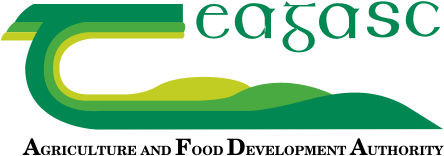15 January 2024
Breeding better beef calves for sale

With uncertainty facing the future of calf exports and the potential need for some dairy farms to move animals earlier on account of nitrates changes, Alan Dillion, DairyBeef 500 Co-Ordinator, explained that the onus is on dairy farmers to breed a better quality beef calf to ensure repeat custom.
Speaking from a Teagasc / Animal Health Ireland (AHI) CalfCare Event in Co. Cork recently, an initiative supported by Volac and ran in conjunction with dairy co-ops, Alan said: “The Dairy Beef Index (DBI) is a tool dairy farmers need to be aware of when selecting AI sires or stock bulls.
“By using the DBI, a tool developed for dairy farmers to improve the quality of the beef calf produced without effecting calving characteristics of the dairy herd, both dairy and beef farmers can benefit.
“Bulls are ranked on the basis of DBI on the ICBF website and it enables dairy farmers to pick a beef bull that will not impact gestation length or have excessive calving difficulty, while still producing a reasonably good beef calf for sale.”
For dairy farmers using the index for the first time in 2024, Alan advised them to study the index carefully and, once they have identified a suitable threshold for calving difficulty and gestation length, the beef traits of each individual bull then need to be examined.
Depending on the herd’s EBI Beef Sub Index, sires of varying beef ‘power’ maybe required to ensure the production of calves with a high Commercial Beef Value (CBV). Herds with lower beef merit dairy dams will have to focus on sires with higher beef sub-indexes within the DBI to ensure the former is realised.
“When the appropriate bulls are selected, you can produce a calf with good beef characteristics without impacting on the calving characteristics of you herd. The production of a quality, healthy calf is critical to ensure repeat custom for your calves from beef farmers year after year,” Alan said.
Also read: How to produce high Commercial Beef Value calves
Commercial Beef Value
Alan also highlighted the important role the Commercial Beef Value will play when influencing beef farmers’ calf purchasing decisions in the years ahead. The CBV is a euro value attributed to all cattle that are likely to beef finished. A star and euro value rating system, it is available under three categories or animal – suckler, beef x dairy and dairy x dairy. On average, cattle that have a high CBV, will be faster growing, grade better at slaughter, meet market specifications at a younger age and will not eat as much per kilogram of liveweight gained.
“Beef calves from the dairy herd will eventually be purchased on the basis of their Commercial Beef Value. Going forward, dairy farmers should expect more calf buyers to focus on purchasing calves from farms that are producing high CBV calves. By producing a higher CBV calf, dairy farmers should have a more saleable calf and the calf purchaser will have a more economically viable beef animal,” Alan explained.
The series of Teagasc/AHI CalfCare events will continue across the country over the coming weeks. For details on the closest event to you, click here.
For more information on the Teagasc DairyBeef 500 Campaign, click here.
Also read: Preparing for calf rearing with DairyBeef 500
